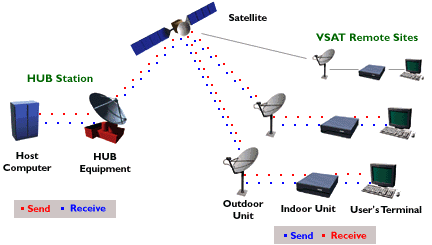
What is Wireless Communication?
Wireless communication refers to the transmission of information or data over a wireless network, without the use of physical cables or wires. It enables communication between devices or systems that are not physically connected, using various wireless technologies such as Wi-Fi, Bluetooth, cellular networks, and satellite communications.
Wireless communication has revolutionized the way we communicate and share information, enabling us to stay connected and access information anytime, anywhere. It has transformed the way we work, learn, and socialize, and has become an essential part of our daily lives.
Wireless communication has numerous applications across different industries, including healthcare, transportation, manufacturing, and home automation. In healthcare, it is used to monitor patients remotely and transmit data to healthcare professionals for diagnosis and treatment. In transportation, it is used to track vehicles and improve safety by providing real-time traffic updates and alerts. In manufacturing, it is used to automate processes and monitor machinery remotely, reducing downtime and increasing efficiency. In home automation, it is used to control and monitor various systems, including lighting, heating, and security, using smart devices and voice assistants.
Wireless Communication and Networks Research @ ACPS Research Group
Wireless communications are rapidly evolving, and here are some emerging research areas of the ACPS research group in wireless communications. Internet of Things (IoT): IoT devices are becoming more widespread, and wireless communication plays a critical role in enabling them to connect to each other and to the cloud. ACPS research group focuses on developing wireless communication technologies that can support the massive number of devices that will be connected to IoT networks. 5G and Beyond: 5G is the latest standard in wireless communications, but research is already underway for 6G and beyond. ACPS research group focuses on developing technologies that enable faster data transfer rates, lower latency, and more reliable connections. Edge Computing: Edge computing involves processing data closer to the source, which reduces latency and enables faster response times. ACPS research group focuses on developing wireless communication technologies that can support edge computing and enable more efficient use of resources. Millimeter Wave Communications: Millimeter wave (mmWave) communications use high-frequency waves to transmit data over short distances. ACPS research group focuses on developing mmWave communication technologies that can operate over longer distances and in adverse weather conditions. Cognitive Radio: Cognitive radio uses machine learning algorithms to optimize wireless communication by dynamically allocating available resources based on current traffic conditions. ACPS research group focuses on developing cognitive radio technologies that can adapt to changing network conditions and enable more efficient use of spectrum. Wireless Power Transfer: Wireless power transfer enables devices to be charged without the need for cables. ACPS research group focuses on developing wireless power transfer technologies that can transmit power over longer distances and support a wider range of devices.